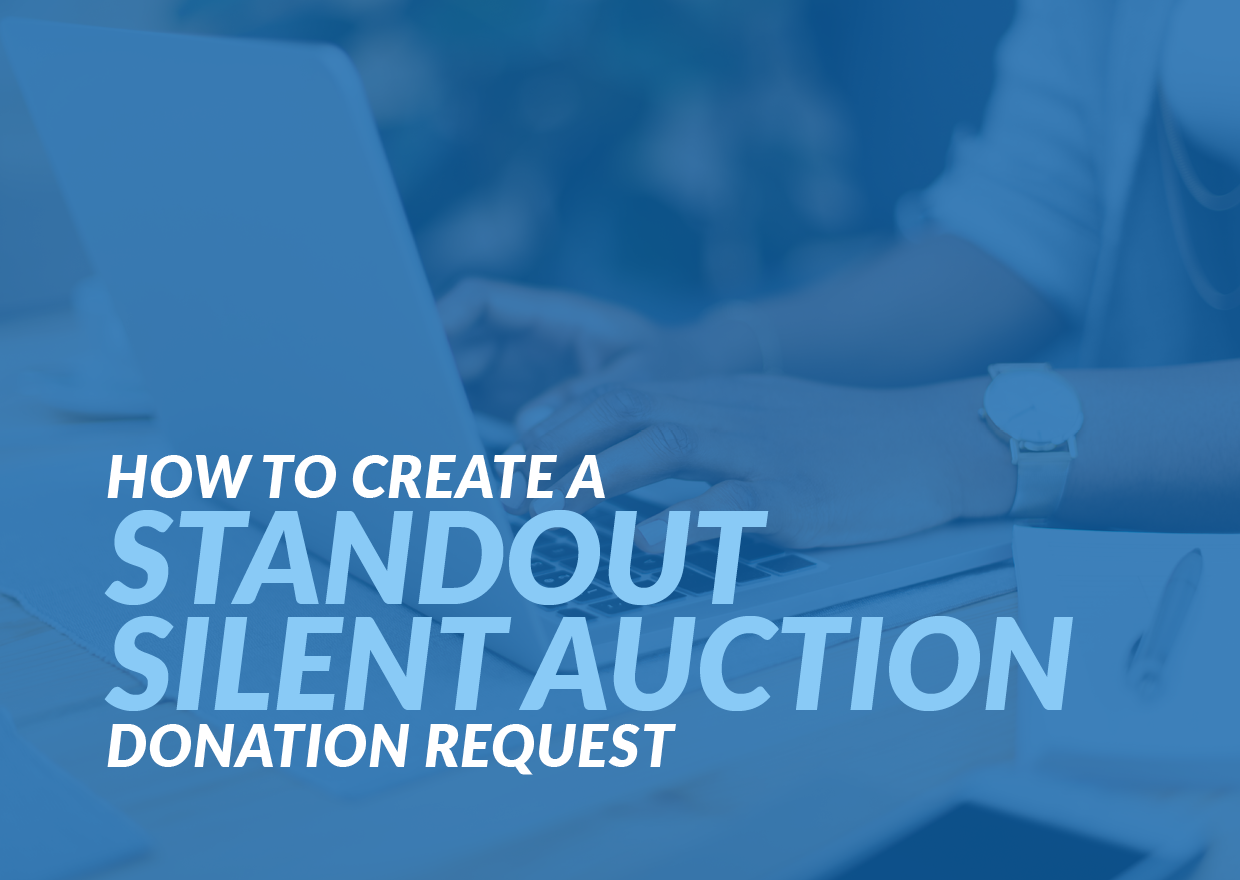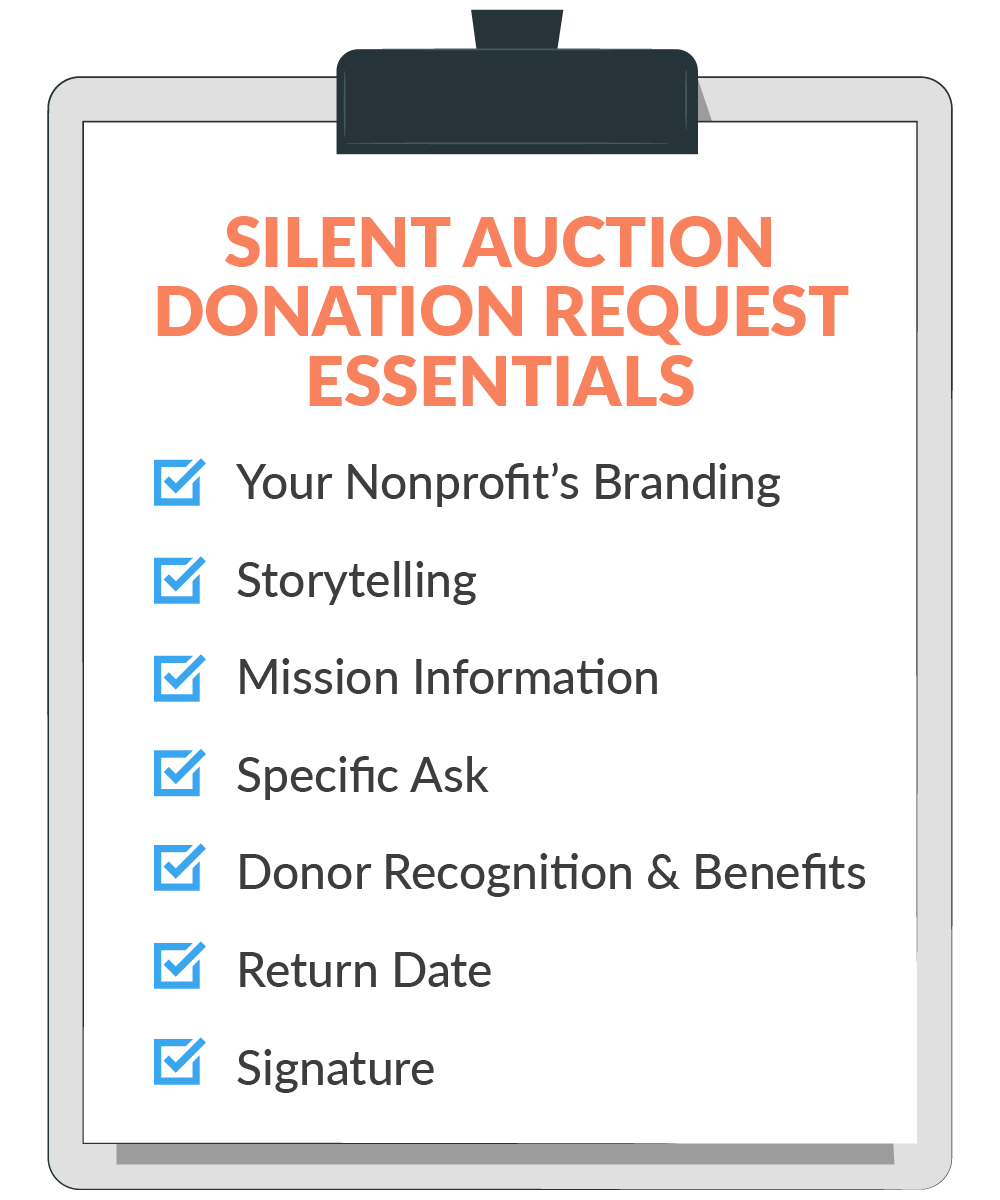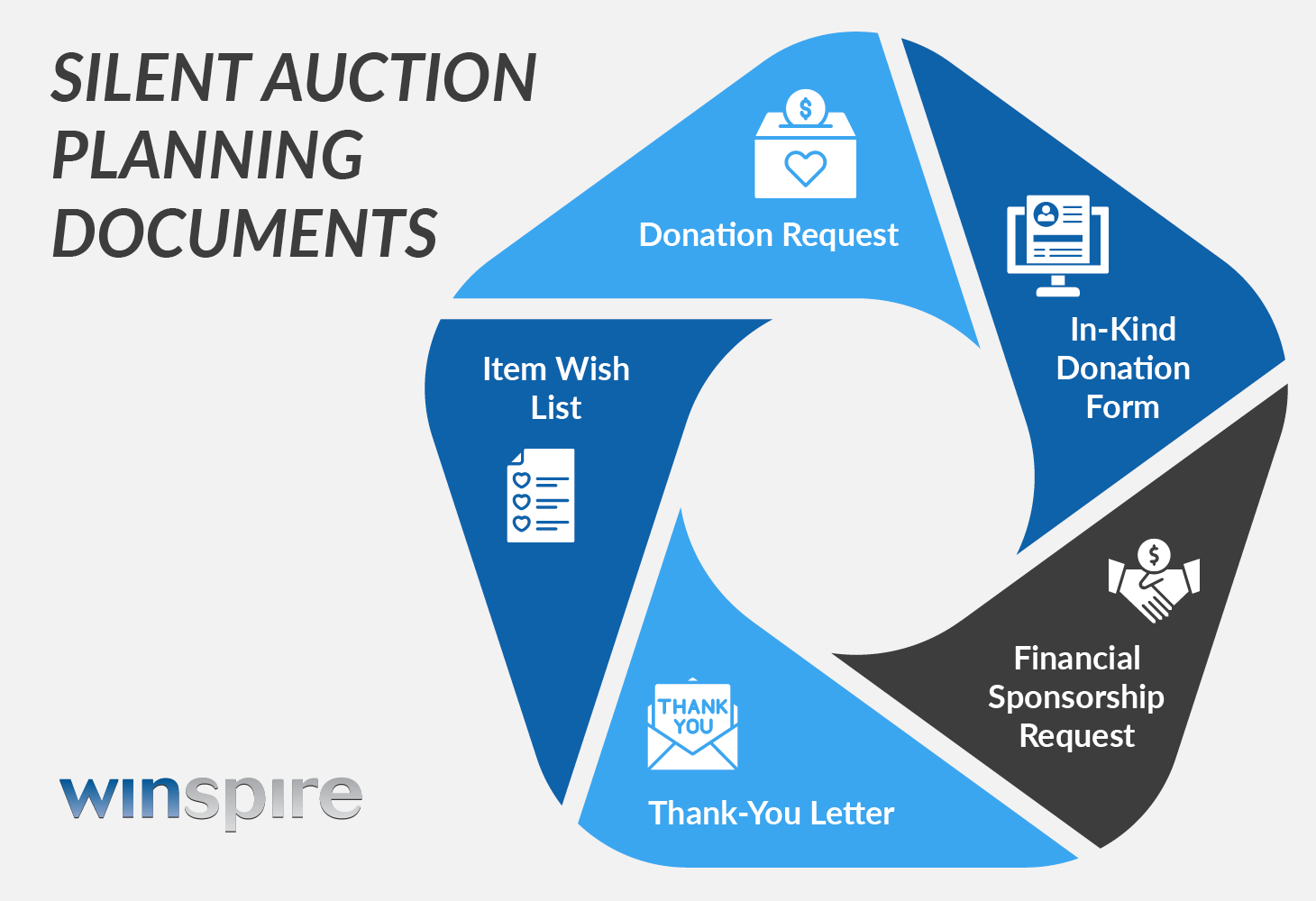Procuring high-quality, appealing items is essential for your nonprofit’s silent auction to succeed. After all, the only way you’ll reach your fundraising goal is if your supporters place generous bids on the available prizes!
However, it’s also important to keep upfront costs low to maximize the amount of funding that can go toward your organization’s mission after your event. To accomplish this, try to procure your silent auction items at the lowest possible cost—or for no cost at all by requesting in-kind donations from individuals and businesses.
In this quick guide, you’ll learn all you need to know to craft a compelling silent auction donation request for any contributor, including:
- What is a silent auction donation request?
- Silent Auction Donation Request Essentials
- Other Important Silent Auction Forms
Let’s get started by defining what a silent auction donation request is and discussing how to format it.
What is a silent auction donation request?
A silent auction donation request is a solicitation made by a nonprofit with the goal of receiving in-kind gifts of goods, services, or experiences to sell at the auction. Your organization might send these requests to individuals, businesses, or other nonprofits, depending on what items you’re looking for.
While the term “silent auction donation request” typically refers to a written document, you can solicit in-kind donations for your auction in several ways:
- In-person meetings
- Phone calls or video chats
- Direct mail
It’s preferable to meet with potential donors in person or via video chat so you can talk to them face to face, especially if you’re asking for a high-value item. During the meeting, use your written donation request to guide the conversation. Afterward, give the potential donor a copy of the request or attach it to your follow-up email so they can reference it as they decide whether to contribute to your auction.
Silent Auction Donation Request Essentials
Every nonprofit’s event goals and needs are different, so your silent auction donation requests should be tailored to your organization and its donors. However, there are a few elements you should make sure to include no matter what, which we’ll walk through in the following sections.
Your Nonprofit’s Branding
Just as for-profit organizations use their branding to stand out from their competitors and sell their products or services, your nonprofit’s brand makes your organization recognizable and memorable for potential donors, helping to “sell” them on supporting your mission. When creating a silent auction donation request, include the following brand aspects:
- Logo. Add your logo to the letterhead so the reader can immediately identify the request as coming from your organization.
- Color scheme. Design your letterhead in your nonprofit’s brand colors to draw the reader in visually.
- Typography. Use the same font throughout the body of the request and ensure it’s easy to read either on paper or on a screen, depending on how you’ll give the letter to the donor.
- Messaging. Branding also extends to the language you use to communicate about your mission, so keep your word choice, tone, and style consistent as you write.
Consistently branding your donation requests gives them a professional look, which adds to their legitimacy and makes donors more likely to consider contributing an auction item.
Storytelling
Below the letterhead and personalized greeting of your silent auction donation request, hook the donor by telling a true story about your nonprofit’s work. Storytelling demonstrates your organization’s past impact in a way that engages donors emotionally and inspires them to support you in your upcoming efforts.
The most compelling nonprofit stories usually focus on how the organization improved the life of one of its beneficiaries. For example, an animal shelter could tell the story of a rescue cat that found its forever home through the organization. Or, a nonprofit that focuses on children’s literacy might talk about a third grader in an underserved school district who discovered a love of reading by participating in the organization’s after-school tutoring programs.
Include relevant data points and images in your donation request to ground your story in reality. Additionally, remember to obtain consent from any human subjects (or their guardians if they’re underage) before using their names or photos for fundraising purposes.
Mission Information
Transition out of your introductory story by briefly describing your organization’s mission and vision. If this information wasn’t made crystal clear to the donor through your story, it will be once they read this section.
It’s helpful to mention a few of your organization’s core values in this section as well, especially when requesting auction item donations from corporate sponsors. The most effective partnerships between nonprofits and businesses are built on shared values, so establish them early on to catch prospective donors’ attention.
Specific Ask
The most important part of any fundraising solicitation is the call to action. For silent auction donation requests, the best calls to action identify exactly what item you want the donor to provide. This ask should align with the individual supporter’s interests or the goods and services the corporate sponsor provides, as well as the prize value you think they’d be willing to contribute.
Research and segment potential auction item donors to ensure you’re asking the right individuals or businesses for the right prizes. However, when you approach a donor, have a few alternative donation ideas in mind in case they turn down your initial request but still seem interested in supporting your organization.
Donor Recognition and Benefits
Particularly in the case of corporate sponsorships, prospective auction item donors often want to know what is in it for them. Spell out the perks they should expect if they donate an item to your organization, such as:
- Shoutouts in your event marketing materials
- Features on your bid sheets or signage at the event venue
- Opportunities for business representatives to speak at your auction
The forms of recognition you mention in your donation request are in addition to the personalized thank-you notes you’ll send to each auction item donor after the event—those should go without saying.
Return Date
If you don’t give donors a deadline to send you their contribution, you likely won’t get all of your items in time for your silent auction. Try to set the return date at least two months in advance of your event—that way, you’ll have some breathing room to follow up with unresponsive donors, print your display sheets, and incorporate photos of your most valuable items into your marketing materials.
Signature
Lastly, ensure each silent auction donation request is signed by a senior individual at your organization, such as your president, director of fundraising and development, or board chair. Along with your branding, this signature adds to your letter’s credibility and persuasiveness.
There are a number of templates available online to help you get started with writing silent auction donation requests. Just make sure to customize the template you use by branding it to your organization and personalize it to each donor you approach.
Other Important Silent Auction Forms
While solid donation requests are essential to the silent auction planning process, they aren’t the only documents you’ll need to prepare. Here are a few of the other essential forms you should have on hand:
- In-kind donation form. Leave this form behind with your donation request so that once a donor decides to contribute an auction item, they already have the paperwork to do so. It should include the donor’s contact information, the item’s description and estimated value, and tax deduction information for the gift.
- Financial sponsorship request. Some sponsors might prefer to provide direct financial contributions to your event rather than donating auction items. This document should outline the levels of sponsorships available, their prices, and the benefits associated with each so donors can choose how much support they’re able and willing to give.
- Thank-you letter. Prompt stewardship is essential to show auction item donors that you value their support and want to develop a lasting relationship with them. Before your event, create a thank-you letter template that you can easily customize for each donor and send out within 48 hours of the auction’s end.
- Item wish list. At the beginning of the procurement process, get your team together and brainstorm a list of items you’d like to feature in your auction. This document will serve as a reference for the specific asks you’ll make when you craft each donation request.
Keep in mind that it might take several tries to secure each item on your wish list and multiple conversations to win over a potential donor or sponsor. Be flexible with your requests and remember that in some cases, the best way to procure some items may be to look for a nonprofit discount or contact a consignment auction item provider (like Winspire!) rather than asking for an in-kind contribution.
Silent Auction Donation Requests: The Bottom Line
A well-written silent auction donation request is the key to securing many of your highest-value items at no cost to your nonprofit, maximizing your event fundraising success. After you’ve drafted your first letter, ask a few people at your organization to read over the letter and provide feedback so that you can present the best possible final version of your donation request to potential individual donors and corporate sponsors.
To learn more about the ins and outs of silent auction items, check out these resources:
- The Ultimate List of 100+ Silent Auction Item Ideas. Start creating your auction wish list and decide on the best donors to approach with our list of the most appealing silent auction items.
- 30+ Silent Auction Basket Ideas for Nonprofit Events. Sometimes the easiest way to ask for silent auction items is to request small donations that you can bundle into a valuable themed basket—explore our ideas to get started with this strategy.
- How to Price Silent Auction Items: The Complete Guide. Discover how to develop a pricing strategy for each of the prizes you procure that maximizes revenue and appeals to supporters.





